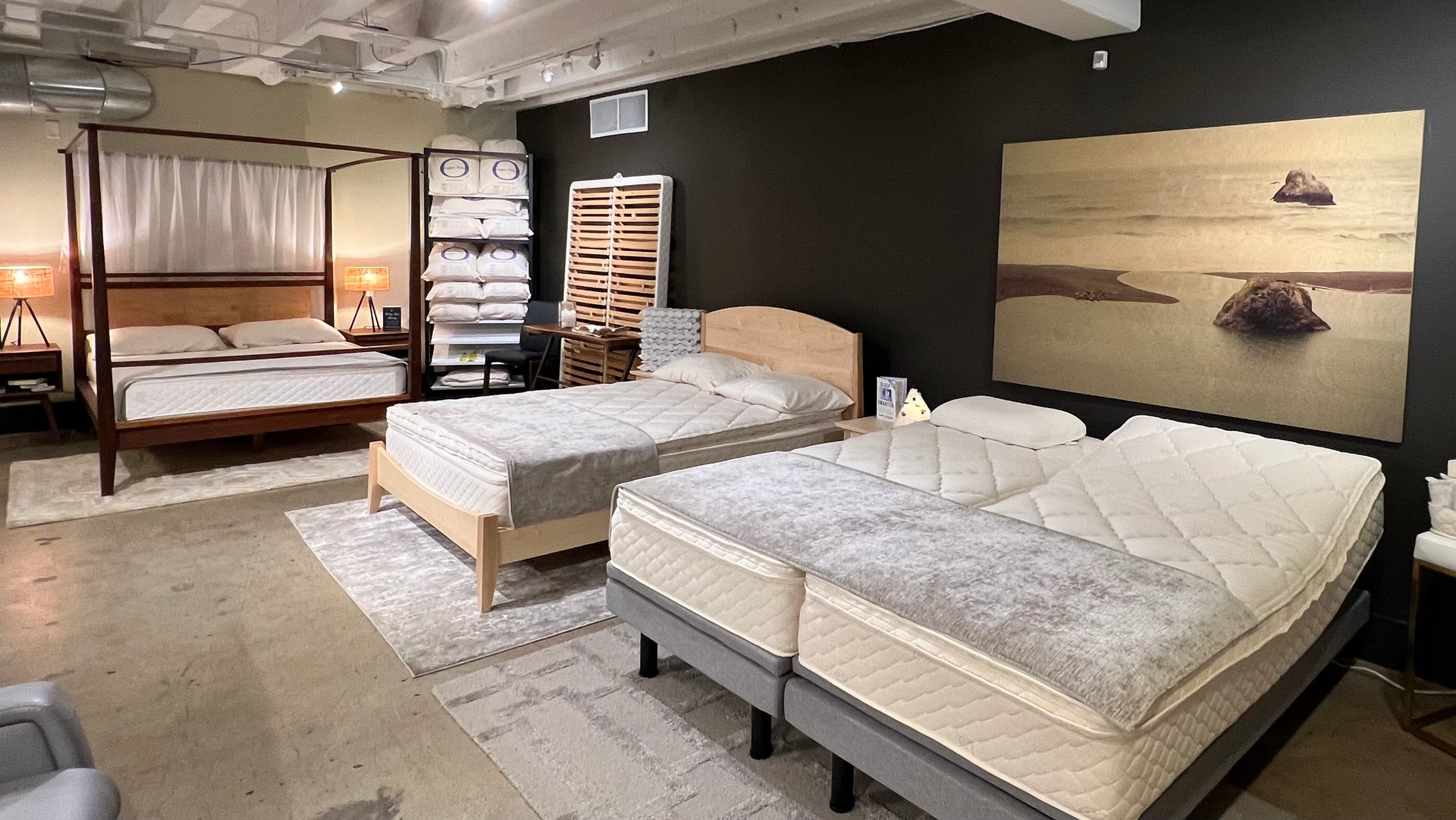What could be sweeter for your sleep than knowing you’re dreaming in a bedroom that supports your health in every possible way?
It wasn’t routine generations ago, but today, chemical pollutants of all sorts assault our bodies every day, indoors and out. It’s sobering to realize that indoor air pollution is often worse than what’s outdoors, because of poor ventilation and many common products, particularly toxic cleaners. Other culprits are chemicals commonly found in fabrics, foams, wood finishes, plastics, and other synthetic or treated materials.
Chronic, low-level exposure to common industrial chemicals is related to increased risks of infertility, cancer, developmental brain disorders, and obesity. “Some sources, such as building materials, furnishings, and household products...release pollutants more or less continuously,” says the Environmental Protection Agency (EPA).
Most individuals who choose organic mattresses are already tuned in to the dangers of household cleaning products. (We’ve talked to lots of baking soda and vinegar fans, for example, who use these natural alternatives instead.) But it’s daunting for many to figure out how to get rid of everything in their homes that may contain dangerous compounds or pesticide residues, or release harmful gases.
The truth is, most people can’t. That’s an unrealistic goal, unless you have a budget for foundation-to-roof transformation of your home and every object in it.
Your Recovery Zone
So how about a positive, proportionate approach? Since your bedroom is the place where you spend at least a third of your time--why not make it the primary space where you’re shielded from chronic exposures? In your natural bedroom, you’ll rest every night in a “recovery zone” where your body can work to repair itself from the low-level chemical bombardment that’s inescapable everywhere else--outside your home, inside your car, at your workplace, and so on.
What’s in a natural bedroom? The most important things are those you’re closest to all night--your mattress and bedding. A natural latex mattress encased in organic cotton and wool avoids the most dangerous bedroom chemicals—flame retardants. Choose organic bedding and sleepwear, such as organic cotton or natural linen, produced without pesticides, chlorine, and chemical finishes. Avoid synthetic pillows, comforters and bedspreads.
Apart from your mattress and bedding, the rest of your bedroom can become beautifully natural, too.
Natural Elements
Your bed and other furniture. Solid wood pieces, constructed without glues and finished with linseed oil or beeswax, and perhaps a low-VOC stain, won’t pollute the air you’re breathing. Pressed-wood (plywood) and particleboard furniture emits formaldehyde and contains strong adhesives. Avoid synthetic foams in armchairs or chaise lounges. Budget on your mind? Consider vintage or second-hand pieces that were made before synthetic materials were introduced. If there’s an upholstered treasure you can’t part with, repair any rips in the fabric so no foam particles can escape.
Carpet. If you crave something cozy underfoot on cold mornings, choose a wool or cotton bedside rug over wall-to-wall synthetic carpeting. (Carpet harbors dust, which is where many chemical residues collect.) Other natural treats for the toes include mats or rugs woven from natural grasses; these aren’t plush, but a good pair of slippers takes care of comfort.
Curtains and upholstery. Avoid synthetic and pre-pressed fabrics and opt instead for wooden or woven grass blinds, or drapes made from natural fabrics such as organic cotton, hemp, or flax. Avoid “Scotchguarded” fabrics or any that are labeled “stain resistant.”
Paint. Choose zero-VOC paints to beautify walls with fresh color that won’t expose you to sickening fumes. Check out the timeless appeal of milk paint or grasscloth wallcoverings, too.
The floor. Natural wood is wonderful, but there are other healthful options. Cork flooring is beautiful, as well as soft and warm underfoot. A rediscovered old favorite, linoleum, made of linseed oil, pine resin, wood flour and other eco-friendly materials, is surging in popularity—and you can create fabulous, colorful patterns.
Creating natural bedrooms is a project you can take on one step at a time, knowing that with every step, you’re doing something very positive. It’s fun, it’s simple, and it’s a wonderful thing to do for yourself and your family.
This article was brought to you by SavvyRest, more information is available at www.savvyrest.com. Written by Laura, November 8, 2013 - 11:16am
